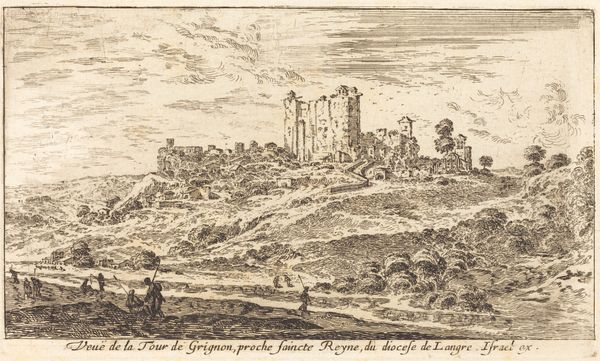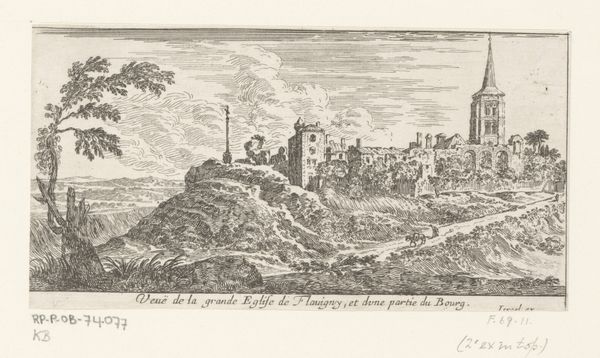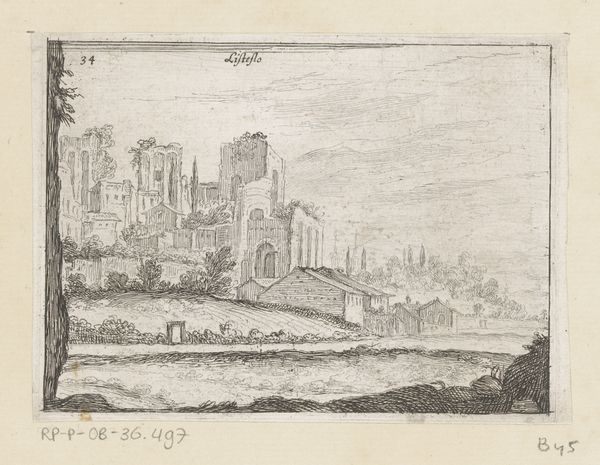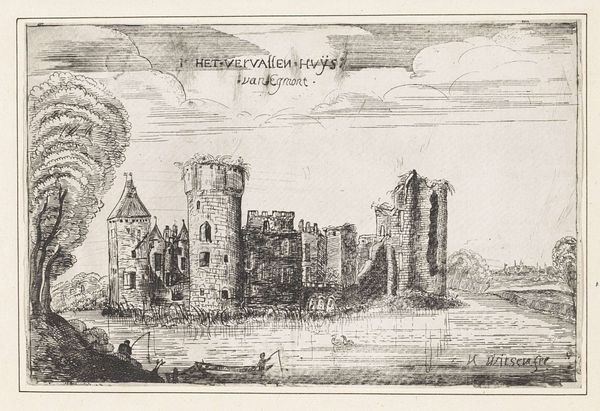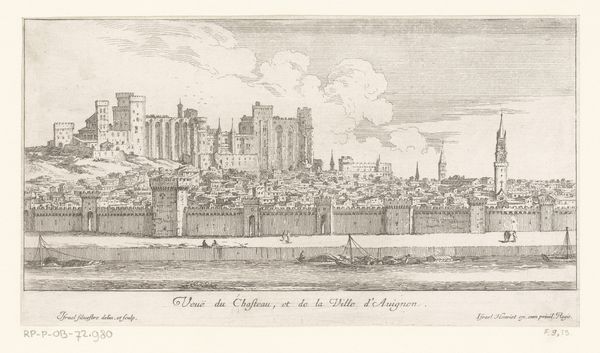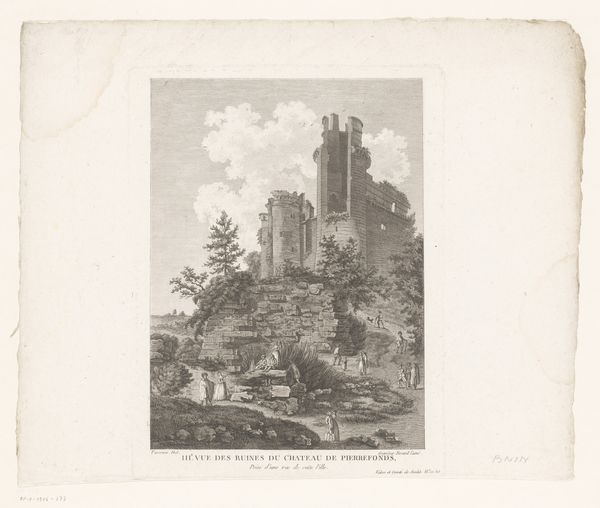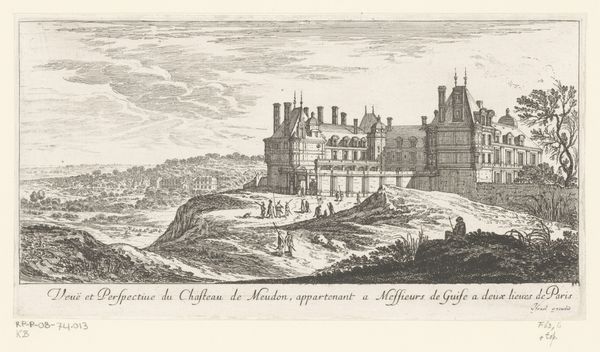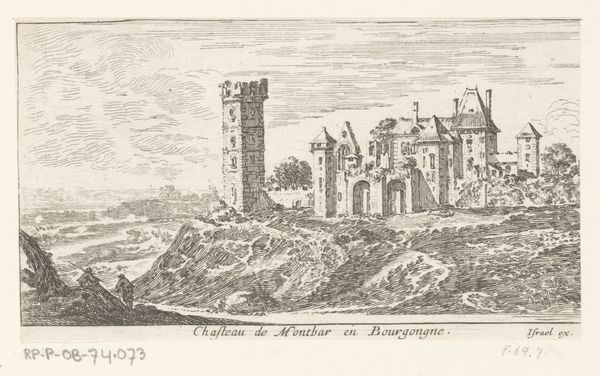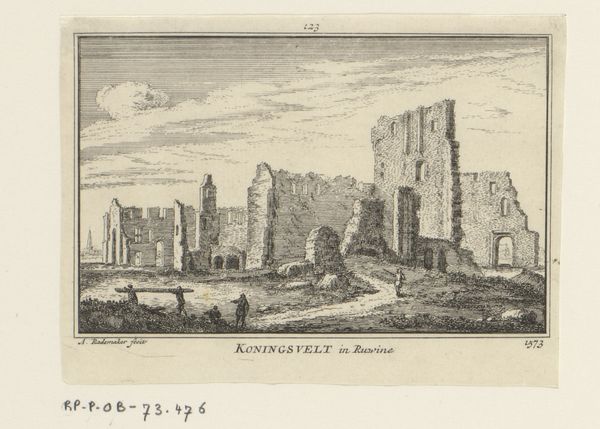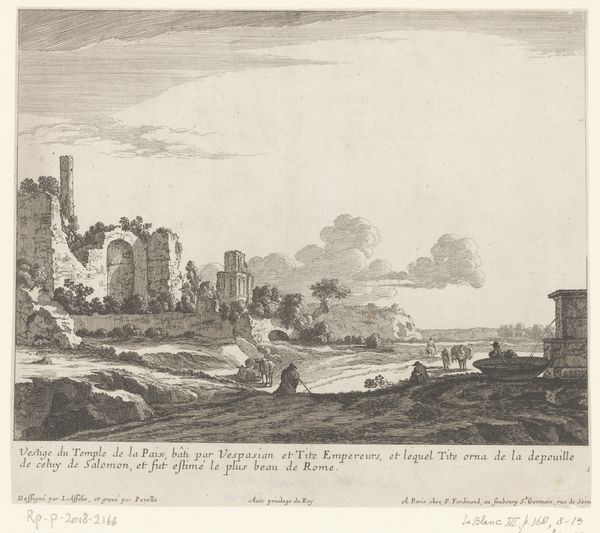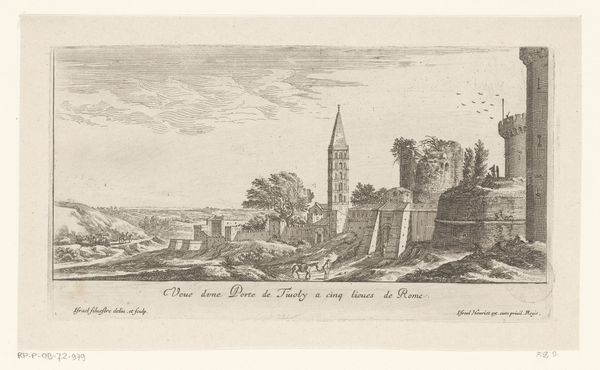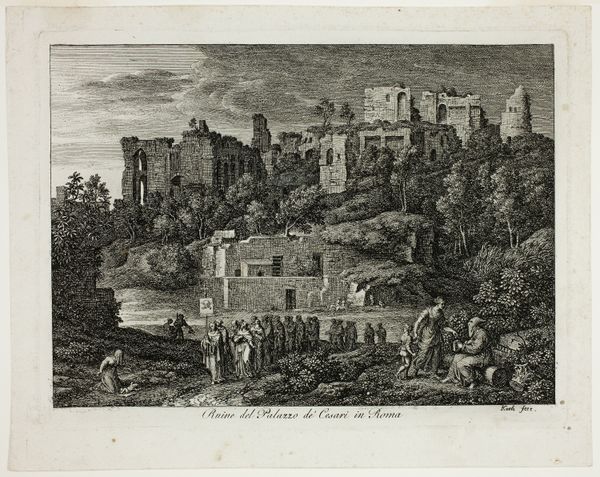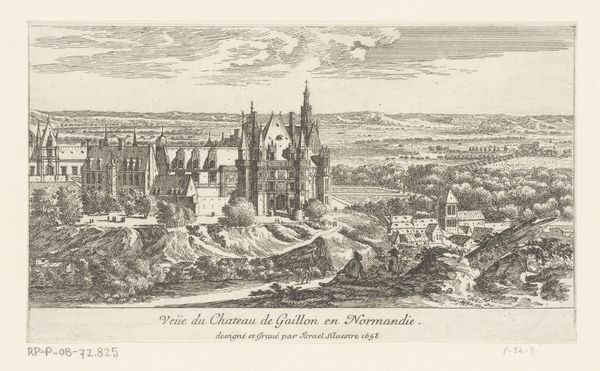
drawing, etching, ink, engraving
#
pen and ink
#
drawing
#
baroque
#
pen drawing
#
pen sketch
#
etching
#
landscape
#
ink
#
sketchwork
#
mountain
#
cityscape
#
engraving
Dimensions: height 92 mm, width 162 mm
Copyright: Rijks Museum: Open Domain
Editor: Here we have Israel Silvestre's "Berglandschap met de toren van Château de Clermont," an etching from the mid-17th century, rendered in ink. It has a stark beauty, almost desolate. What strikes you most about this piece? Curator: What immediately grabs my attention is how this seemingly straightforward landscape etching serves as a subtle commentary on power, ownership, and the land. Consider the explicit dedication: "La Tour de Clermont...appartenant a Monsieur le Comte de Tonnerre." This isn't just a depiction; it's a statement of possession. Who do you think this print was created for? Editor: Perhaps to solidify or celebrate the Comte de Tonnerre’s status, to visualize his domain? Curator: Precisely! And how does Silvestre visually reinforce this hierarchy? Look at the composition. The tower, a symbol of feudal power, dominates the scene, doesn't it? And what about the people? Tiny figures almost swallowed by the landscape, seemingly dwarfed by the tower. How does the artwork speak about societal structures and hierarchies through this representation? Editor: That makes sense. The small figures do highlight the tower's importance, almost as though their purpose is to emphasize its scale and power. The landscape, which initially seemed neutral, suddenly feels politically charged. It becomes an asset. Curator: Exactly. The etching becomes a tool for social and political reinforcement. Even the picturesque elements are interwoven with power dynamics. Recognizing such nuances offers us a crucial perspective. Editor: I had not thought of landscape art as a medium for such clear messaging about social structure. Now, looking at it with those ideas in mind, the artwork reveals another level of understanding about historical contexts. Curator: It’s through this intersectional lens that we truly start to appreciate the complexity of art, even in seemingly simple etchings like this one.
Comments
No comments
Be the first to comment and join the conversation on the ultimate creative platform.
